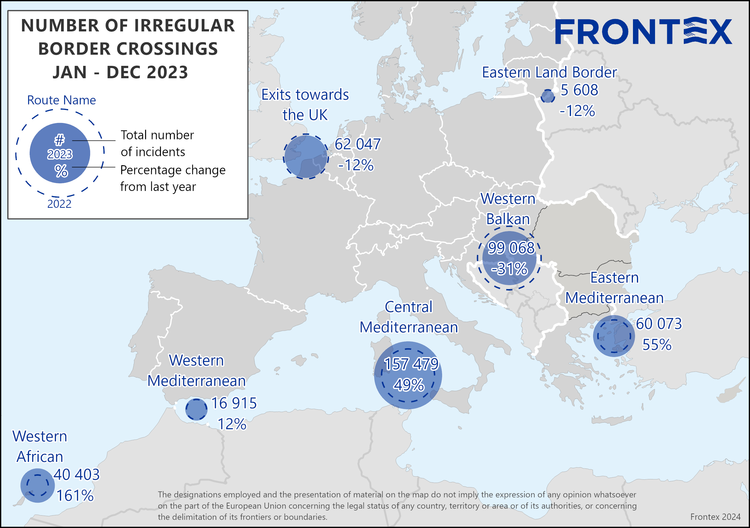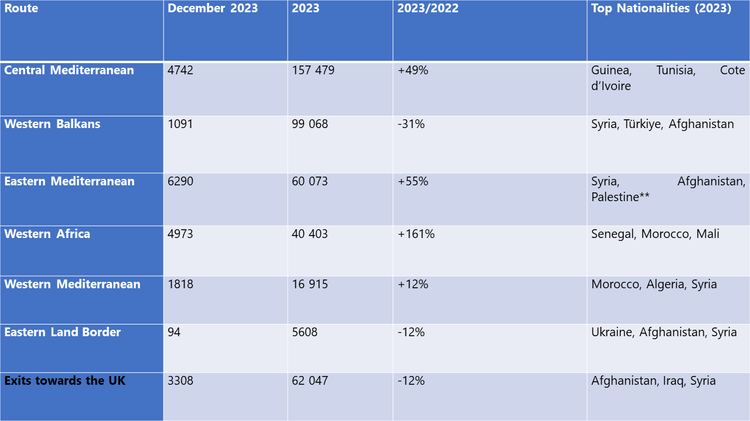The number of irregular border crossings at the EU’s external border in 2023 reached a total of approximately 380 000, driven by a rise in arrivals via the Mediterranean region, according to preliminary calculations by Frontex. This marks the highest level since 2016 and constitutes a 17% increase from the figures in 2022, indicating a consistent upward trend over the past three years.
The Central Mediterranean was the most active migratory route into the EU, accounting for two out of every five irregular crossings (41%) in 2023, followed by the Western Balkans (26%) and Eastern Mediterranean (16%).
Syrians accounted for over 100 000 irregular crossings last year, the highest number among all nationalities. They were followed by Guineans and Afghans. These three top nationalities accounted for over a third of all detections.
The statistical data shows that women accounted for 10% of the total number of all irregular crossings last year, and children accounted for another 10%.
“The numbers presented today show the evolving challenges we face in managing the EU's external borders,” said Frontex Executive Director Hans Leijtens. “We remain committed to ensuring the security and integrity of the EU's borders. It’s equally crucial to address the humanitarian aspects of migration. These figures represent not just statistics but real people.”
Frontex currently has 2 500 EU border guard officers and other staff taking part in its joint operations at Europe’s borders, supporting EU member states and third countries in managing migratory flows and contributing to preventing and detecting cross-border crime, such as migrant smuggling, trafficking in human beings and terrorism.

